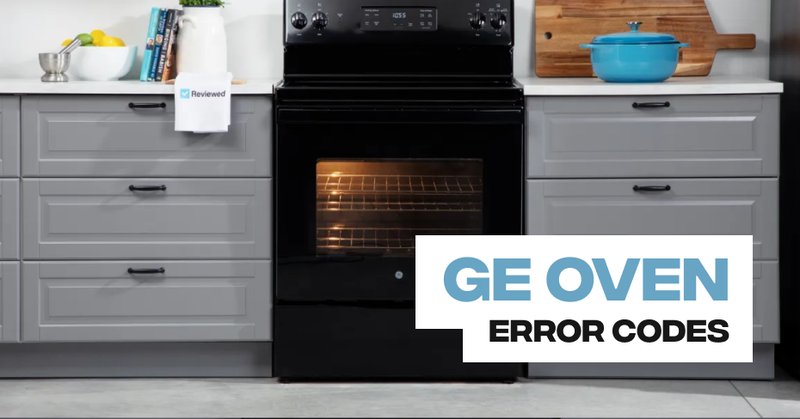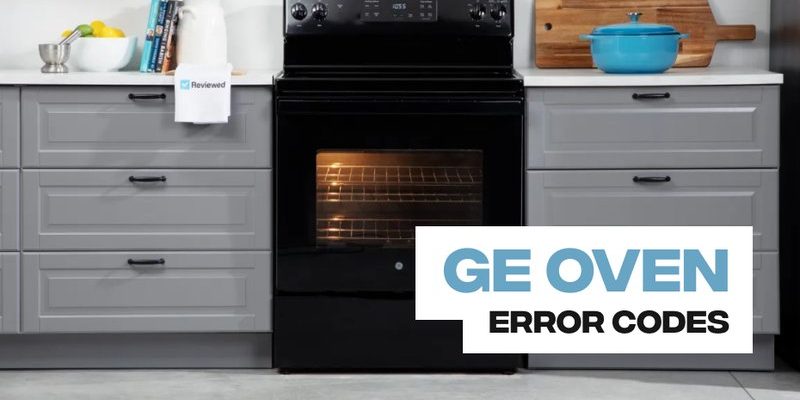
Think of your oven as a well-oiled machine. Each part has a specific role, much like instruments in an orchestra. When one part is out of sync or not functioning right, it disrupts the whole performance. Error Code E3 in GE ovens and ranges usually indicates an issue with the oven temperature sensor—a key player in making sure your food cooks evenly. But just like when a car dashboard light pops on, it’s not necessarily cause for panic. Let’s dive in to understand what this error code really means and what you should do about it.
Understanding Error Code E3 in GE Ovens & Ranges
When your GE oven or range displays an Error Code E3, it’s essentially its way of saying, “Hey, something’s not quite right here.” This code typically points to a problem with the oven’s temperature sensor. Think of the sensor as your oven’s internal thermometer. It makes sure the temperature inside matches what you set—kind of like how a thermostat keeps your home cozy.
But what happens when the temperature sensor isn’t working correctly? It’s like when you’re wearing sunglasses indoors; everything looks darker and can be misleading. The oven might not know how hot it really is, which can lead to uneven cooking. Imagine baking cookies and having half the tray turn out perfectly while the other half stays doughy. That’s not the kind of culinary surprise anyone wants!
Now, you might wonder, how does a sensor malfunction? It could be due to normal wear and tear, an electrical fault, or even a loose connection. Just like a guitar string that gradually gets out of tune, these components can degrade over time. So, what should you do if you see this error?
Steps to Address the Error Code E3
So, you’ve got an Error Code E3 staring back at you. What’s next? First things first, don’t panic and don’t continue using the oven until you’re sure it’s operating safely. Here’s the deal: your oven’s temperature sensor is crucial for safe cooking, and ignoring the problem could lead to uneven or undercooked food. Not exactly an appetizing thought, is it?
Start by checking the simplest solution—reset your oven. Much like rebooting your computer when it acts up, sometimes a quick reset can resolve minor glitches. To do this, unplug the oven for a few minutes (or turn off the circuit breaker) and then power it back on. If the error clears, you might’ve just had a temporary blip.
If the error persists, it’s time to look at professional help. Contact GE customer support or a certified appliance repair technician. Remember, fiddling with internal components if you’re not sure what you’re doing is like trying to build IKEA furniture without the instructions. It can lead to more harm than good.
Is It Safe to Use Your Oven with Error Code E3?
You might be wondering, “Is it safe to use my oven if I see this error?” The short answer is, it’s better to be safe than sorry. Error Code E3 affects the temperature sensor, which is critical for ensuring your meals are cooked safely. Using an oven without accurate temperature control is a bit like baking a cake in an oven with an unreliable timer. You may end up with overcooked, undercooked, or even hazardous food.
Moreover, when the sensor malfunctions, your oven might not effectively regulate its heat. This could potentially lead to overheating or, conversely, not heating enough. What does this mean for you? Well, not only does it make cooking unpredictable, it could also pose safety risks if not addressed.
In essence, while it might be tempting to ignore the error and continue using the oven, it’s wise to prioritize your safety and get to the root of the problem. Consider it a ‘check engine’ light for your oven—don’t ignore it! Instead, seek professional advice and ensure your appliance is in top shape before you whip up your next meal.
Preventing Future Error Codes
No one likes dealing with error codes—they’re like unexpected roadblocks on your culinary journey. To prevent future instances of Error Code E3, regular maintenance can make all the difference. Think of it as giving your oven a mini Tune-Up now and then, much like going to the dentist for routine cleanings.
Start by keeping your oven clean and free from residue build-up. Imagine how hard it is for you to breathe in a dusty room—a clean appliance works much more efficiently. Regularly check for any signs of wear in the wiring or components visible to the eye. If something looks out of place, call in a professional rather than going the DIY route.
Finally, consult your oven’s manual for any specific maintenance tips or contact customer service for further advice tailored to your model. By staying on top of your oven’s health, you’re more likely to catch potential issues early and avoid those pesky error codes in the future. Remember, a well-maintained oven is not just about reliability—it’s about safety and peace of mind, too.
By following these guidelines, you can ensure your meals are consistently tasty and safe, without the worry of unexpected interruptions from error codes.
